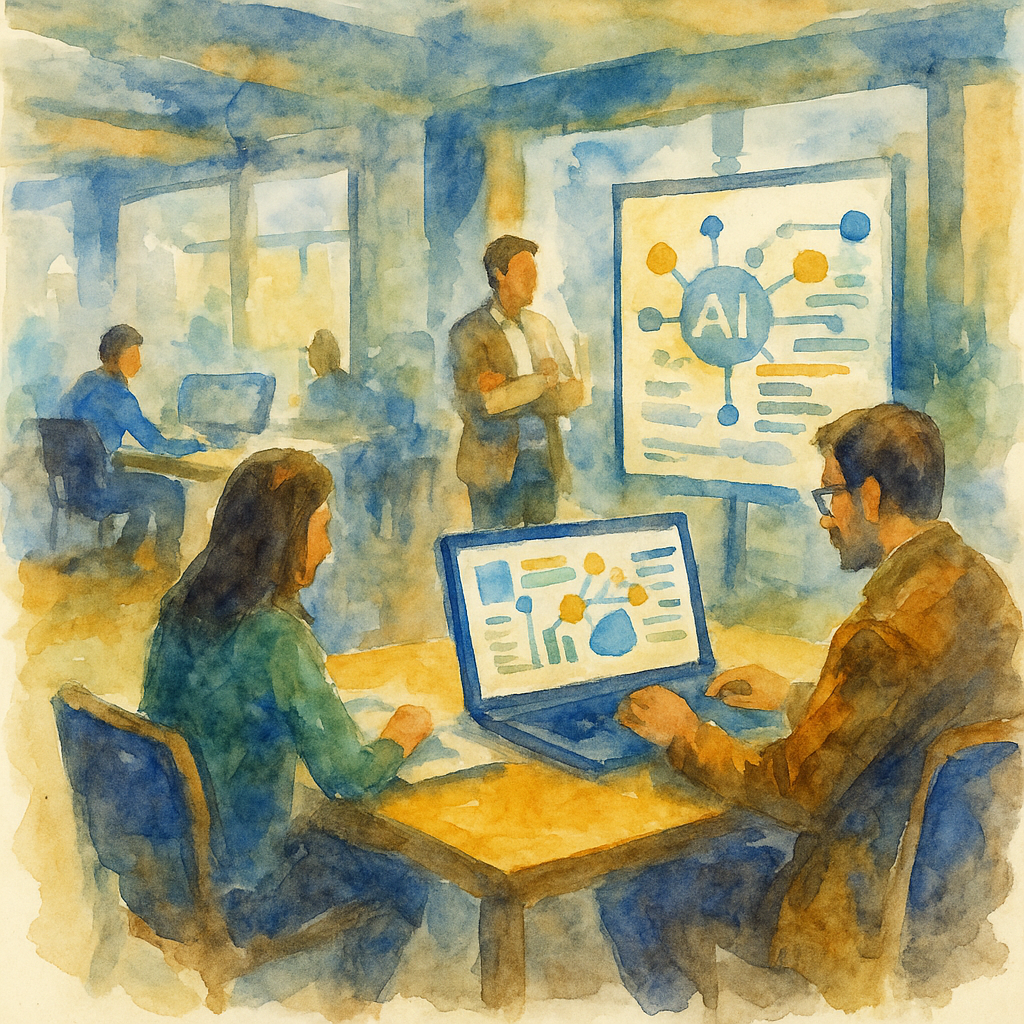It starts with enthusiasm.
A team launches a pilot project in AI — a promising use case, a small dataset, some initial results that look impressive in a presentation.
Everyone nods, curious and optimistic. Six months later, the proof of concept has vanished into the archives. The idea was good, the technology worked, but nothing ever reached production.
The illusion of progress
The problem isn’t technical. It’s structural.
POCs often live in a bubble — disconnected from the organization’s real capabilities, processes, and decision cycles.
The team learns something interesting, but the rest of the company doesn’t.
And the same pattern repeats: endless experiments, few results, and a growing sense of frustration.
Three reasons why POCs fail to scale
- No clear link to strategy
The project answers a question that no decision-maker actually asked. - No ownership
Once the experiment ends, no one knows who’s responsible for the next step. - No capacity to absorb
The organization isn’t technically or culturally ready to integrate the new solution.
The missing piece: alignment
AI projects can’t live apart from the rest of the enterprise. They must fit into the system — its identity, operations, and ambitions.
That’s where enterprise design tools like EDGY come in: they help visualize where AI truly creates value and where it doesn’t.
It’s not about more POCs, but about building the conditions for scalability: shared understanding, clear ownership, and measurable value.
Mini-story: the chatbot that taught a lesson
A large retailer launched an AI chatbot to handle customer inquiries. Technically, it worked.
But the real pain point wasn’t the chatbot — it was the lack of coordination between departments managing returns, logistics, and client data.
Instead of scaling the bot, the company used the POC as a mirror: it revealed missing links between teams and systems.
The next project didn’t involve a chatbot at all — it focused on connecting data flows and improving processes.
That’s when AI started creating real value.
From proof of concept to proof of impact
Scaling isn’t about deploying models faster.
It’s about ensuring that each project strengthens the organization’s capabilities, not just its technology stack.
A good AI strategy turns experiments into learning loops:
- each project clarifies what the company needs to improve,
- those improvements make the next project easier to scale.
That’s how the real acceleration happens.
Metrics that matter
- Ratio of pilots that reach production.
- Time between POC and measurable business impact.
- Number of organizational capabilities strengthened by each project.
And after?
AI maturity isn’t about quantity of experiments, but quality of learning.
A single well-aligned project teaches more — and scales better — than ten disconnected ones.
Because in the end, it’s not about proving that AI works.
It’s about proving that it works for you.
FAQ
Should we stop doing POCs altogether?
No. POCs are useful — as long as they’re designed to learn something relevant to the organization’s strategy, not just to “try the technology.”
How do we know if an AI project is scalable?
When the use case is connected to real business value, when ownership is clear, and when the organization has (or can build) the capacity to absorb it.
Who should lead AI initiatives?
Not just the tech team. The most successful projects are co-led by business owners and data experts, working together toward a shared outcome.
